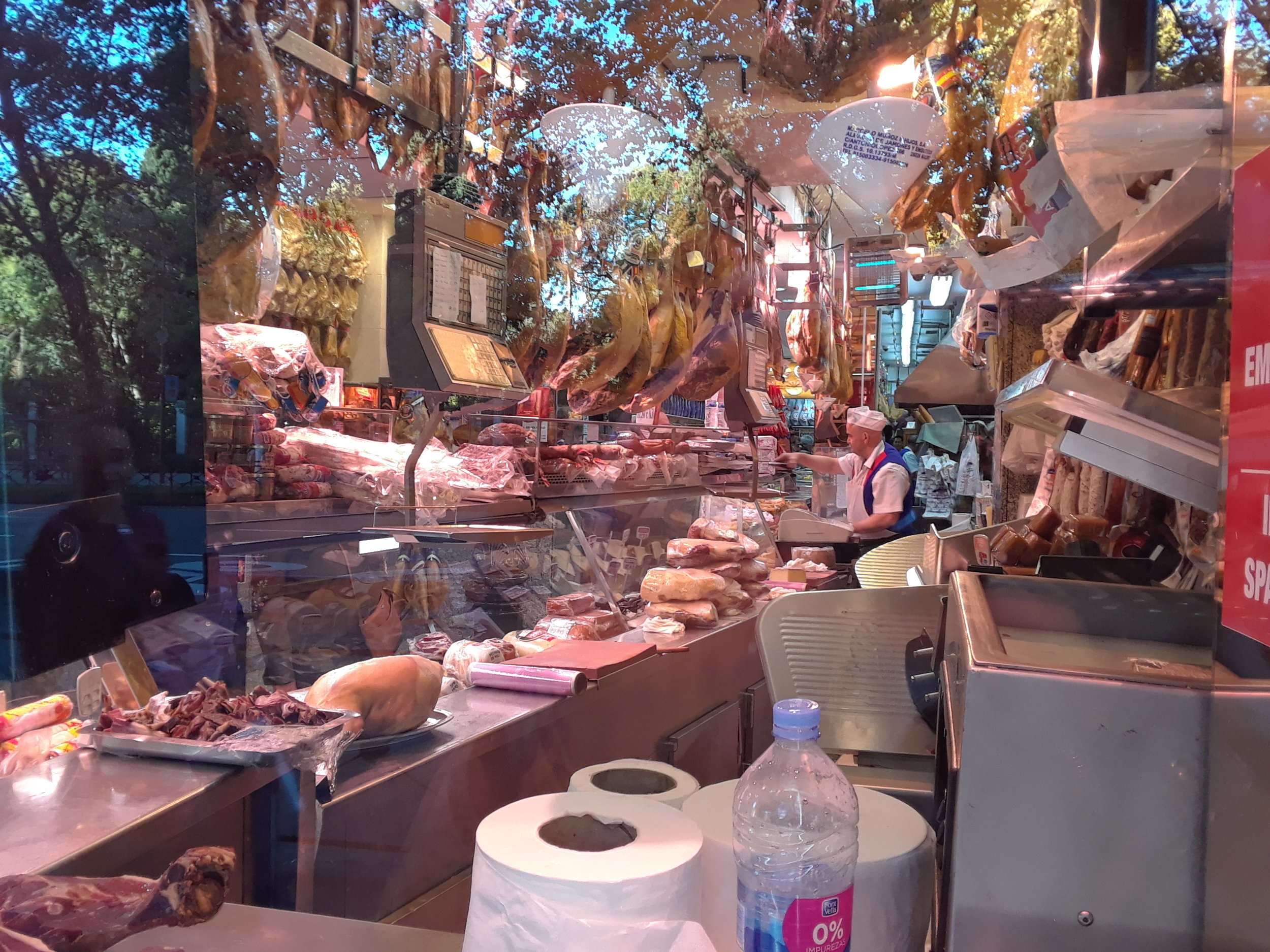Madrid part 2: Artists' response to war
Sunday morning we started the day with church. On several past trips, I've attended services in other languages, so I was relatively well prepared for the experience: music would be the easiest part to connect to, even if I didn't understand the words, and I'd probably recognize at least one melody.
To my surprise, though, I also followed a good amount of the sermon on emotions as exemplified in Jesus. I know far less Spanish than German--especially sentence construction--but thanks to the pastor's written slide notes and my knowledge of the Bible, I understood far more than I expected. (If/when I can learn more Spanish grammar, I'm hopeful I'd start to pick things up quickly. I probably have more vocabulary than I realize, between the cognates and frequency of Spanish translations in the U.S.)
After church, we left the car at a train station and rode half an hour into Madrid. That part of Spain looks much more barren than I expected: almost like the desert, except without cacti. Marie said the entire area sits on a large plateau, so it's actually at a relatively high elevation. During the day, it got as high as mid-60s (Fahrenheit), but dropped much closer to freezing in the evening. I wore my main light jacket from California, but packed an alpaca wrap and wool hat for when after the sun set.
We lunched near a Madrid train station called Atocha, not far from two major museums. Marie took me to a sandwich place her dad likes that boasts 100 different kinds of small sandwiches, costing 1 Euro each on Sundays and Wednesdays. About three or four sufficed to make a nice meal.
The pork options at another place.
The museum we wanted to see was open till 7 p.m. that day -- and free all day, a 15-Euro savings -- so we strolled around the neighbourhood for an hour or so before entering the Reina Sophia, famous as the home of Picasso's Guernica. I didn't know all the painters on display, but we saw several major figures from the early 20th century (cubism, leading up to World War II), including a fascinating, mid-30s Salvador Dali piece on Hitler.
Much of the work documented or responded to war, including a number of photographs from the Spanish civil war. It was something to think how remarkable it must have been for people of the time to get news and images so quickly, after centuries without the technology to follow conflict so closely, unless you could see or hear it. The danger faced by those courageous journalists--some seemingly right in the heart of combat--also struck me.
View from the museum elevator as we left.
We stayed until nearly closing time, then grabbed tapas at a nearby bar: roasted shishito peppers, a large hunk of bread and a plate of thick Manchego cheese slices. Thus refreshed, we took the train home, stopping only to buy yarn and a crochet hook when I spotted them in a shop. I started a hat for Marie on the ride home.

